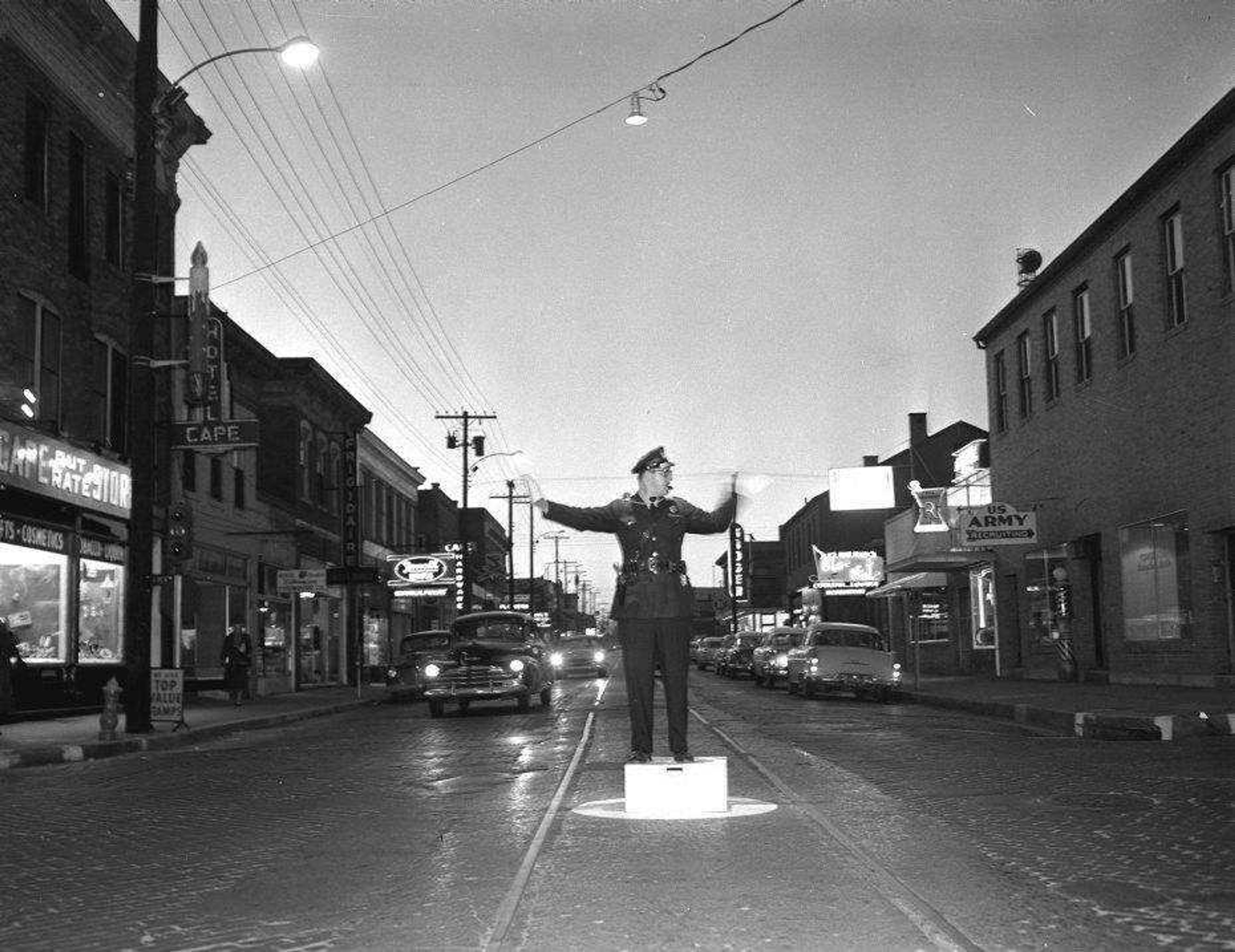Cape Girardeau Police Department makes many changes in 150 years since creation
Today marks the 150th anniversary of the formation of Cape Girardeau Police Department in 1859, when it consisted of a captain, a lieutenant and six officers. Since then, the department, now made up of 75 officers, has gone through a number of changes, including in its staff size, headquarters and role in the community...
Today marks the 150th anniversary of the formation of Cape Girardeau Police Department in 1859, when it consisted of a captain, a lieutenant and six officers.
Since then, the department, now made up of 75 officers, has gone through a number of changes, including in its staff size, headquarters and role in the community.
The original ordinance creating the police department allowed the identities of officers on the force to remain secret from residents, giving only the city marshal and mayor the right to know who served the captain.
The ordinance also bestowed on police officers the power to arrest anyone caught violating the law and put them in the "calaboose," a brick jail just north of the fountain on the grounds of the present Common Pleas Courthouse.
The calaboose included iron rings fastened to the walls where prisoners could be chained. A dungeon whipping post was nearby.
Today, police use the municipal jail inside the police department headquarters at 40 S. Sprigg St. to house suspects.
Adapting over time
The department has adapted to its share of challenges and changes over the past century and a half, such as dealing with the city's considerable expansion, adjusting to the use of new technology in law enforcement and losing four officers and a chief who died in the line of duty.
Still, the fundamentals of solid, day-to-day police work have remained unchanged at the Cape Girardeau Police Department, current chief Carl Kinnison said.
"The obvious changes, from the cars to the handheld radios to the handguns that we carry, the pieces of equipment, those have changed," Kinnison said.
When Kinnison started his tenure at the department 30 years ago, officers carried Smith & Wesson .357 magnum revolvers, which had only six shots.
"As the criminal element began carrying semiautomatics, there was a need to move into that world," Kinnison said.
Initially, police officers began buying their own semi-automatic handguns and were allowed to carry them before the city budgeted the purchase of the firearms for the department, Kinnison said.
Today, every Cape Girardeau patrol officer drives a Ford Crown Victoria, emblazoned with the teal lettering outlined in black that says "Cape Girardeau Police," but when Kinnison began with the department, the vehicles were purchased from local car lots and came in a smattering of colors, makes and models.
At the inception of the police department, police officers received a fee of one dollar for each arrest they made.
The fee continued to escalate, and by 1918, the pay scale had been abolished. In 1959, when the police department turned 100 years old, the pay scale was $250 per month for patrol, $285 for sergeants, $305 for lieutenants, $315 for captains and $365 for the chief of police.
Today, patrolmen have a starting salary of around $31,700, with $40,300 for sergeants, $44,300 for lieutenants and $48,000 for captains.
Community-oriented
It was during the early to mid-1990s that the department began a transition to a more community-oriented approach, said former chief Rick Hetzel.
Ike Hammonds and Charlie Herbst were the first officers assigned to the community position, where they worked toward establishing a rapport with residents and business owners.
Hetzel said he came to the department during this transitional period amid some division.
"It was an interesting time. Not every police officer thought that was what they should be doing," he said.
Hetzel said he referred to the department as a "slice of America pie," vastly different from the police department in Norcross, Ga., where he'd served as chief.
"The town embraced the police department, they had parades — it was very refreshing," he said.
bdicosmo@semissourian.com
388-3635
Have a comment?
Log on to semissourian.com
Connect with the Southeast Missourian Newsroom:
For corrections to this story or other insights for the editor, click here. To submit a letter to the editor, click here. To learn about the Southeast Missourian’s AI Policy, click here.










